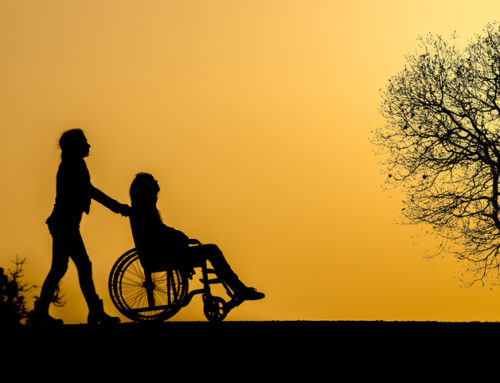April is National Occupational Therapy Month. This is a time to promote and celebrate the hard work and dedication Occupational Therapists (OTs) display in helping patients to reclaim and improve their lives after disabling injuries, chronic and/or crippling illnesses, and stroke recovery. We are going to share some information about occupational therapists, their role in assisting stroke patients and what you can expect from them.
What is an Occupational Therapist?
An Occupational Therapist is a licensed medical professional whose purpose is to help injured, ill, and disabled patients “develop, recover, and improve the skills needed for daily living and working.” Essentially, they help the patient to regain the ability to do the day to day and special activities that they could do prior to their injury or illness. Their purpose is accomplished through everyday therapeutic activities.
How OT Can Help Stroke Patients
Stroke survivors are often left paralyzed on one side of their body (temporarily or permanently); additionally they may have loss or impairment of their cognitive functions, taking away their memories of how to perform the activities that had previously been able to do or their ability to do them. This is where the OT steps in. He or she helps support the patient in their rehabilitation, helping them to regain the ability to perform activities of daily living and their occupations independently.
Occupational Therapy in Action
The process of occupational therapy begins early in the patient’s stroke recovery. A care assessment is done to determine the scope of treatment. Movement, sensation, vision, perception, memory, and concentration, are all measured, as well as a determination concerning whether the patient suffers from depression and anxiety. The patient is also interviewed about his or her daily routines, habits, and home environment in efforts to provide the best therapy for them.
Four Things You Can Expect from Your OT
- Help with practicing your activities of daily living. Observation is the therapist’s primary tool. He or she will watch you perform routine activities to determine in weaknesses and problems and teach you how to overcome them, in efforts to get you to a place of performing them independently.
- Exercises. No, they are not going to make you work out. What they will do is have you do stretches to help improve your movement and give you memory exercises to help with memory loss or issues.
- Assist in preparing your home for your return from the hospital. In most cases the OT will visit your home to check for possible safety issues and look for ways to make your home life easier
- Recommend equipment that can help aid you in your independence such as silverware with grips, raised toilet seats, and handrails as well as other equipment such as those found here.
© Copyright 2017 The Wright Stuff, Inc. Articles may only be redistributed in its unedited form. Written permission from The Wright Stuff, Inc. must be obtained to reprint or cite the information contained within this article.






